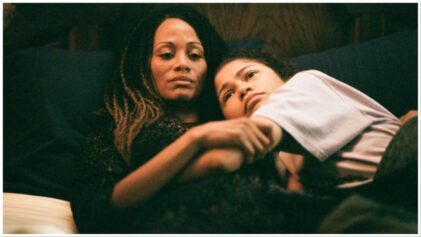The sequel to the 2021 blockbuster opens by declaring the underlying reality that governs all of what happens in Frank Herbert’s apocalyptic, futuristic universe — Power over spice is power over all. Thus begins “Dune: Part Two.”
Picking up from where it left at the end of the first installment, the second part traces Paul Atreides’ (Timothee Chalamet) rise to power among the Fremen, the natives of the desert planet Arrakis, his becoming one of them, finding love, and, although reluctantly, accepting the path predestined for him.

Is he Lisan al Gaib — the legendary messiah from the outer world, touted to deliver salvation to the Fremen and turn Arrakis into a paradise? Or is he Kwisatz Haderach, ‘the one’ who will forever alter the concepts of space and time, who the religious sisterhood of the Bene Gesserit has been trying to bring to life through various sinister machinations?
Paul’s pregnant mother Lady Jessica (Rebecca Ferguson) is convinced he is both. Along with him, she also gains tremendous influence as the Reverend Mother of the Fremen, relentless in her endeavor to establish him as the prophet. Even if it sparks a holy war and results in a bloodbath unlike any ever witnessed.
Directed by Denis Villeneuve, “Dune: Part Two” is a staggering cinematic spectacle. It is 165 minutes of breathtaking grandeur and gorgeousness. Greig Fraser’s terrific camera work gives the film the ethereal quality of a painting in motion.
Whether it be sweeping shots of spice dancing with the pristine sand at windy dusks or the Fremen riding Shai-Huluds, the giant sandworms that they use both as weapons and transport, or the guerrilla attacks that Paul launches along with the Fremen on Harkonnen aircraft wanting to harvest spice or the fight that introduces Feyd-Rautha (Austin Butler) as the next big baddie, the cinematography and the production design are exquisite.
Add to it Hans Zimmer’s meditative, hypnotic music, and the result is nothing short of poetic.
However, Villeneuve is so taken by the optics of it that he lets his grip on the narrative slip. Based on Frank Herbert’s popular novel series, “Dune: Part Two” dabbles with several thorny, timeless debates such as reason vs. religion, pragmaticism vs. fanaticism, destiny vs. free will, love vs. politics, family vs. power, and good vs. evil. But instead of exploring these myriad existential complexities in delicious detail, it barely scratches the surface.
The film has some fantastic supporting characters. Ferguson is truly unsettling as the manic mother (also an accomplished member of the Bene Gesserit) who will stop at nothing. Zendaya is glorious as the fierce, proud, rational Fremen fighter Chani, who is torn between her love for Paul and her fear of who he is becoming. Finally, there is the glorious Javier Bardem as the superstitious Fremen frontman Stilgar.
But despite all its kaleidoscopic distractions, flexes, and brouhaha, “Dune: Part Two” fails to present its hero with any spine-chilling threat or a true aha moment. Not when Paul rides his first Shai-Hulud, or when he fights the dreaded Feyd-Rautha in hand-to-hand combat, or even when he challenges the entire Imperium.
Each of these could have been immersive, unforgettable cinematic experiences. But they are served undercooked, insipid instead. Dramatic flourishes and gripping storytelling can beautifully salvage even the most predictable of plots, especially with such a magnificent cast.
However, “Dune: Part Two” is not that film.
This new installment hands a raw deal to a slew of key characters, much like Zendaya’s sufferance in the first.
Feyd-Rautha gets an incredible buildup. We’re told he is psychotic, and his depravity is beyond redemption. But he is done away with in such a lackluster fashion — too little too soon — it felt offensive.
Rabban (Dave Bautista), the horrific villain of the first, is discarded swiftly, too, and again, without any fanfare.
The slight, ashen emperor (Christopher Walken) barely gets to mouth any lines.
Potent new entrants Princess Irulan (Florence Pugh) and Lady Margot Fenring (Léa Seydoux) don’t get to do much either. But they are likely to feature predominantly in part III, for there will be one.
Written by Villeneuve and Jon Spaihts, the film’s larger politics, its on-the-nose oriental gaze, and its overplaying of the white man’s savior complex are also telling.
All the nobility of the Imperium’s great houses are noticeably white. Everyone else is either brown or Black.
Moreover, the Fremen are shown to be an indigenous tribe that believes in magic, prophesies, and witches. They are fearful, have little, and are gullible enough to be persuaded, exploited, and colonized.
It may be an imaginary, otherworldly, intergalactic odyssey, but certain biases are too deeply entrenched to ever be entirely obliterated.
Moreover, as enviably versatile as Chalamet might be, he is not always effective as the conflicted young man doomed to become a mythic messianic leader constantly at loggerheads with who he is expected to be and what he wants. His singular boyish charm, physical fragility help him establish Paul as a sensitive, vulnerable, reluctant leader. His persona wonderfully accentuated his performance in the first part.
But it proves anticlimactic in the second, in which he plays a hardened warrior burdened by his legacy, shepherding an entire people into oblivion.
Despite its astounding visual grammar, “Dune” isn’t the most original story. The shadows of James Cameron’s “Avatar” (2009, 2022) and HBO’s “Game of Thrones” (2011-2019) loom large.
I hope in the third installment, Villeneuve doesn’t sacrifice emotional heft and narrative depth at the altar of spectacular imagery.


